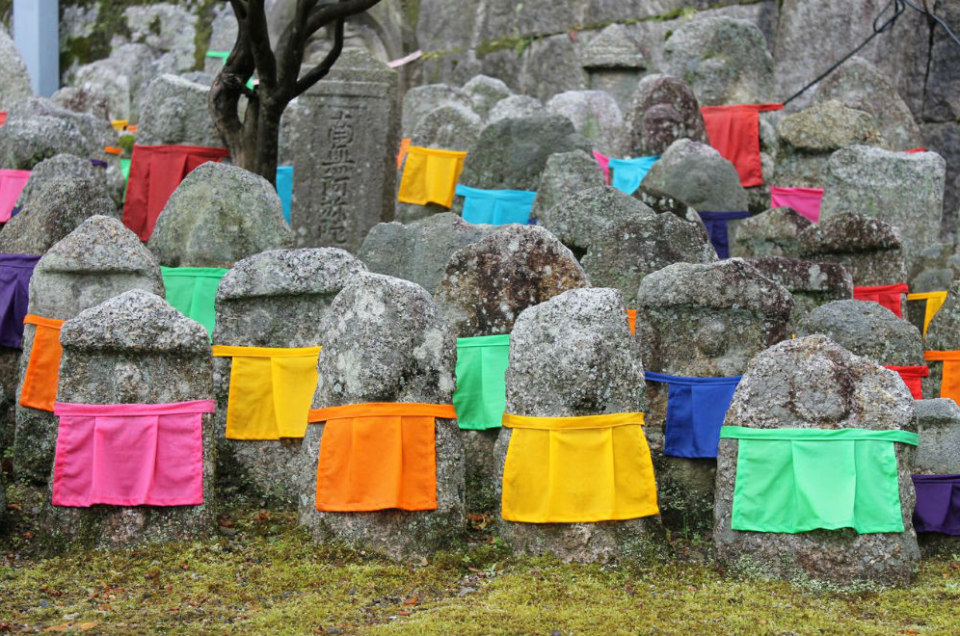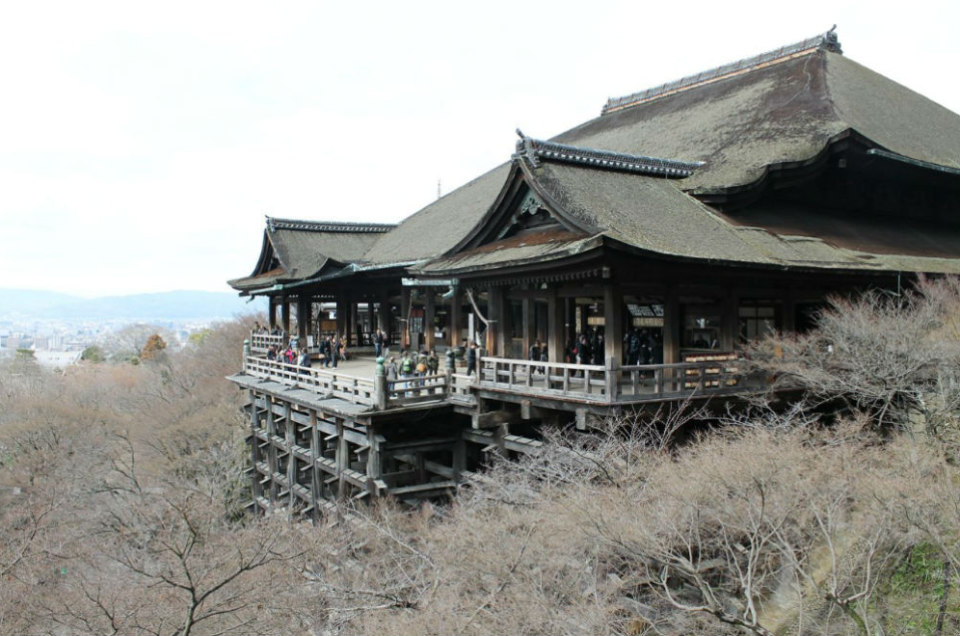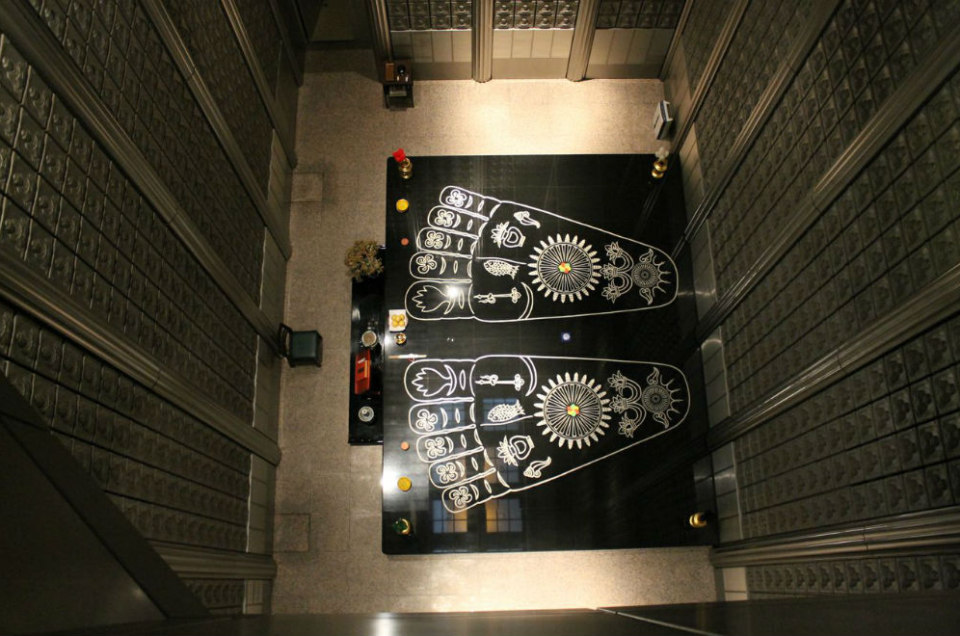There are more than 1600 Buddhist temples in Kyoto, some dating back from the 7th century, and visiting at least a few of them is an essential part of visiting the city.
The first temple that I visited was Kiyomizu, a world heritage site. Set in 31 acres of gardens planted with 1500 cherry trees and 1000 maples, the temple consists of 30 Buddhist structures. The main temple is set into the hillside on 172 wooden poles that are configured like a jigsaw puzzle, with not a nail or screw to hold them in place. Richly decorated, each structure is beautiful, and walking past Japanese people bowing and praying to altars, lighting incense or lining up to drink the sacred waters at one of the wells is very moving.
Interestingly, Shinto, the original spiritual practice in Japan is still practiced and many shrines are incorporated into the gardens of Buddhist temples. In Kiyomizu there is a large Shino shrine where people go to pray for luck in love, and it interesting to see how the two religions coexist peacefully together.
I was part of a group guided around Kiyomizu by one of the monks that lives there, Eigen Onishi, who spoke perfect English on account of going to university in the US when he thought he had no desire to follow in his father’s footsteps and become a monk. Now living at the temple he grew up in, his family is one of eight that live at the temple. He told us that 30 families used to live there, but these days less people are interested in becoming monks, and the temple doesn’t have the financial resources to support a larger population anyway.
Being shown around by Onishi gave us access to parts of the temple that were usually off limits to visitors, including a room known as the Footprints of Buddha, which was clad with 1076 tiles showing the face of Buddha, and a giant drawing of his feet several stories down from the balcony we looked over at them from.
We released paper lotus leaves over the balcony, and were told to think of those that we loved most and saw Buddha in, Eigen said that he personally saw Buddha in his three year old daughter’s smile. It was a lovely ritual. Someone in our group asked Eigen the secret to being happy, and he said that it was all a matter of adjusting how we feel in order to celebrate the good in everything that happens, and create balance in our minds. Receiving that information is such an appropriate setting, from an actual monk, seems to resonate so much stronger than if you’d read it in a book somewhere.
There are winding streets full of stores selling knick-knacks, gifts and snacks all around Kiyomizu, which makes it a fun area to explore. There is an excellent Italian Japanese fusion restaurant nearby, named Garden Oriental Kyoto, situated in a resplendent villa that was owned by a famous Japanese artist. You could spend the whole day exploring that area alone, but I also squeezed in another temple, Kodaiji, which was beautiful, and has a rock garden, which was unfortunately under construction that day. The next day however I visited Ryoanji Temple, another world heritage site that houses the most famous rock garden in Japan. It was beautiful, and again, very serene.
I also explored the bamboo forest at Arashiyama, and walked the gardens at Okochi Sanso, the private villa built by a famous Japanese silent movie actor. There were beautiful gardens to explore everywhere, which were still pretty even in the winter, I could only imagine how much more beautiful they would be if I was visiting in the spring or the fall. If you like to walk, then Kyoto is a wonderful place to explore, as you never seem to be very far from some highly impressive shrine, temple or garden.



